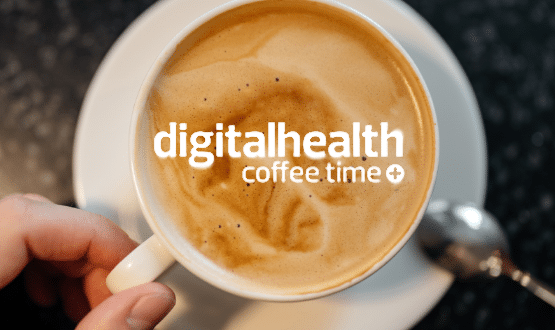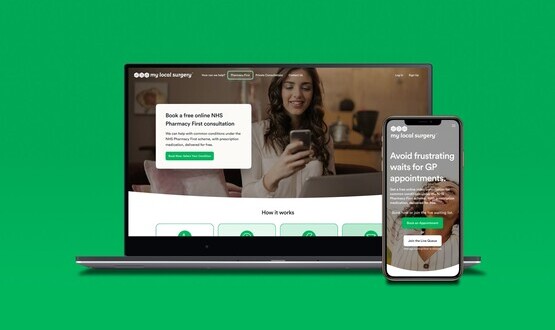ETP potential
- 15 November 2005
 Jon Hoeksma
Jon Hoeksma
The Electronic Transfer of Prescriptions programme has a clear aim – to replace the 350m paper prescriptions generated each year with electronic messages between GPs and other prescribers, dispensers and the agency responsible for reimbursing prescriptions.
Anticipated benefits of electronic prescribing include reduced errors from transcribing prescriptions, better patient safety and convenience – particularly on repeat prescriptions – and huge potential efficiency gains from eliminating the current need for prescriptions to be re-entered into different systems.
The programme is being led by Connecting for Health (CfH) group director Tim Donohoe, who before joining the national programme in early 2003 had previously worked with CfH CEO Richard Granger at Deloitte and Touche and at the Department of Work and Pensions.
Donohoe told EHI that the idea of ETP has been around since the 1980s. After the Department of Health ran three ETP pilots in 2002-2003 it was decided the service should be organised nationally. The target set in the NHS IT strategy ‘Delivering 21st Century IT Support’ is to have ETP fully implemented by the end of 2007.
Paper unsustainable
The current total of 350m prescriptions each year is growing at 5% a year. “Manually processing these is probably unsustainable,” says Donohoe.
Once ETP is fully introduced GPs will no longer have to write out a script for each prescription but will be able to sign digitally. “The potential of the e-prescriptions service, particularly with CRS is huge,” stresses Donohoe.
He adds that 70% of prescriptions are repeats “but the current manual system treats them all the same way”. Once a paper script is generated it then has to be physically sent to the Prescription Pricing Authority (PPA) where it is manually re-entered onto another system for reimbursement.
The CfH director emphasised that the new service has been carefully developed, with each stage thoroughly tested in test sites before further roll-out occurs. “We’ve not sat in Leeds and dreamed up this system which we’re now implementing; we’ve consulted very widely with user groups, suppliers and patients.”
|
"We’ve not sat in Leeds and dreamed up this system which we’re now implementing; we’ve consulted very widely with user groups, suppliers and patients." — Tim Donohoe, group director at Connecting for Health
|
The sandpit
One of the main challenges of ETP is the number of local GP and pharmacy systems the national system has to interface with, about 20 in total. ETP uses the NHS spine for patient demographics, to log-in users and control access, and provides the mechanism for sending messages.
A huge amount of effort has since been underway to enable the 20-plus GP and pharmacy existing system providers to connect with the national system. Donohoe explains the process: “First we published specifications on what systems would have to do to interoperate. They then have to go through a rigorous testing process – the sandpit.”
Once suppliers have met the technical requirements, compliant systems are then “put into initial sites” that include a GP and a pharmacist. “At that point we are most interested in how users are interacting with the system,” says Donohoe. These initial deployments provide the opportunity to identify any problems and resolve them before systems are more widely deployed.
In phase one of the project ETP runs in parallel with traditional prescribing with the prescription form exactly the same, except for the addition of a bar code. “The script is still signed by the prescriber, and can be taken anywhere to be filled. It has no impact on the patient,” says Donohoe.
The first significant milestone for the project was getting the core national software up and running by the end of 2004, with the first local systems going live in February 2005. To date about 80 GP sites and seven pharmacies now have compliant software.
“Most suppliers will have reached technical compliance and initial implementation status by Christmas, and we will see systems ready to start wider deployment by the end of the year,” says Donohoe. He adds that only two or three systems have yet to complete the testing phase.
Plans for the next stage
Once this initial phase is completed he says phase two will be “about building capacity to do this out in the wider NHS”. Phase 2 will initially focus on supporting the introduction of new technology and the changes in business processes and clinical change that may follow. Technical requirements for phase two will be published by CfH “in early 2006”.
“The earliest that widespread deployment will start will be the middle of next year,” predicts Donohoe. “We’re doing this though the co-operation of the various existing suppliers and to a large degree we’re dependent on them.”
He says that CfH is working with system suppliers to gauge their deployment capacity, and to avoid problems occurring such as patients receiving an electronic prescription from their GP but not having a local pharmacy able to fill it.
One early priority in moving to wider deployment will be to ensure that the connectivity necessary to use the service is available to all GPs and pharmacists “and for pharmacies it largely isn’t yet”, says the CfH programme director. He said this would change with the recent completion of the new pharmacy contract, which includes funding for IT upgrades.
Crucially, in phase two GPs will for the first time be able to sign prescriptions electronically. “Technically the tools for electronic signing are already in place,” says Donohoe.
The third phase of the programme – beginning in late 2006 – will focus on the wider deployment of the phase two software, leading to national roll-out across England.
Donohoe says CfH is currently evaluating options on how best to manage this roll-out, including examining the possibility of introducing the service out on a geographical basis. “It may be easiest to enable all of pharmacy across the country before beginning wider roll-out to GPs,” says Donohoe.
|
"It’s about being in a default position where GP systems issue an electronic script rather than a paper one" — Tim Donohoe
|
Nominating a location
Another option being considered is to begin with nominated scripts – prescriptions which name the pharmacy where the prescription will be filled. “We could potentially make nominated scripts the first ones done electronically,” says the CfH director. He stresses, however, that the nomination facility in the system is designed for patients’ convenience, not to enable doctors to nominate where patients gets their prescription filled.
“There were legitimate concerns earlier this year over whether GPs would have the ability to direct scripts to particular pharmacies. It’s difficult to know whether that happens with the current paper system but with the electronic system it will be much easier to identify and do something about it.”
He explained that eventually there will be three locations that patients can nominate where they will be able to have their prescription fulfilled: in the GP practice, in the pharmacy, and eventually online using HealthSpace. Donohoe admits that the ability for patients to access and manage their prescription details through Health Space remains “some time off, a couple of years out”.
The final phase of the project, due from the end of 2007, is ‘steady state’ with the national prescription service fully implemented. “It’s about being in a default position where GP systems issue an electronic script rather than a paper one.”
Donohoe says that from the patient’s perspective, unless they have nominated a particular pharmacy, they will “still get something that looks like a prescription”. In certain circumstances though – such as for many repeat prescriptions – a patient will no longer need to visit the practice or get a piece of paper.
Asked whether he remained confident that CfH would hit the December 2007 target to have ETP fully implemented Donohoe says: “If we have to run paper and electronic systems in parallel, then in the context of a target it’s more important to get it right.”
Loose ends to be tied
The CfH director told EHI that requirements have evolved since ‘Delivering 21st Century IT Support’ was published. “First, no-one had thought through how ETP might interact with CRS [the National Care Record Service]. The second change is around policy – there is now a wider role for pharmacists to play that can be facilitated through information technology.”
“The prize is extending the role of ETP and integrating it with CRS,” emphasises Donohoe. “We don’t know, for instance, how many prescriptions are actually issued from the 150m scripts written each year.”
Once the national prescriptions service is running he says that for the first time GPs will be able to see the state of every prescription they write, including whether it has been issued.
Asked what details from the prescription service will be held on CRS, Donohoe says the details have yet to be confirmed but says that a “useful debate” is currently underway – led by the Care Records Development Board. “Until that debate around CRS is completed it’s not clear the role the prescription service will play.”
Technically, however, the national prescribing system has been designed to enable all elements to be included within CRS. “Our position is that anything is possible: details of the prescription, which pharmacist dispenses it, who dispenses what and where.”
He stressed that in many ways it would be up to the NHS to determine how to best use the system. “We’ve designed the service as well as we can, how you make use of it is down to you. We want people to recognise the value of the system and exploit it to the best possible use.”
Within the next four to six weeks CfH will issue a further round of guidance on how people can get ready for the electronic prescribing service – including how pharmacists can access funding for the IT they need through their new contract.




